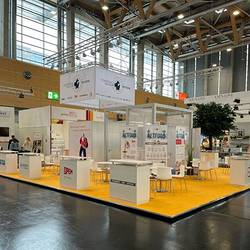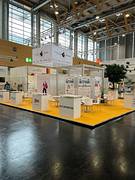Cama and the multiple paths to petfood sustainability

There is little argument that sustainability is now a major driving force underpinning and defining much of what the petfood industry is looking to achieve over the next few years. From raw materials in to palletised cartons out, the entire value chain has to adopt procedures, practices and technologies that make the most efficient use of energy and recyclable materials.
At the recent Interzoo event in Nuremberg, five members of the Petfood Competence Network hosted a round table that discussed sustainability issues at every step of the petfood process. With experts from each stage uncovering the challenges, the attendees were left in no doubt that a joined-up approach created the best possible answer the what is an industry-wide issue.
The Petfood Competence Network comprises eleven like-minded companies that offer decades of combined petfood industry and technological experience (Miavit, JRS, JBT FTNON, Andritz, Waldner, Cama Group, OPEM, The Packaging Group, Clevertech, Reich and Karl Schnell). It was created in reaction to industry demands to give new and existing companies access to very latest solutions and technology, in terms of raw materials, formulation, processing, filling, transporting, sterilizing, loading, packaging and palletizing.
Sustainability in petfood industry
The event was kicked off by Wim Kruikemeijer from the Cama Group, a leading secondary packaging technology company, who explained the rationale behind the collaboration and the joint challenges the member companies faced.
Wim was followed by Torsten Trampe from fibre specialist, JRS, and Volker Pütz from JBT FTNON, a company that specialises in processing technology. Once the formulation has been decided, packaging is the next major stagegate, and arguably the one that has the most high-profile impact in the eyes of consumers.
James Large working for The Packaging Group, manufacturer of primary packaging equipment for flexible packaging, explained that petfood has become an emotional purchase, but you have to balance premiumisation and innovation with recyclability and material performance, which is not an easy task.
James was backed up by Wilbert van Wilbert van de Corput, flexible packaging specialist within OPEM, who explained the many hurdles companies face when balancing aesthetics with functionality and recyclability, arguably one of the biggest combined challenges the industry faces.
But green packaging is a moot point if your processes are not green, which is why Torsten elaborated on the addition of specific ingredients, including fibres, to adjust viscosity in order to make the product flow more efficiently.
And from the machine side of things, James explained how forward-looking OEMs are looking at the carbon footprint of their technologies to ensure they are as efficient as possible. The event painted a picture of sustainability perfection for any new greenfield implementation. But what about existing plants? It was here that Torsten explained how JRS is often approached in a consultancy role to help customers squeeze more efficiency from existing plant and multiple aspects relating to process improvements.
This discussion around consultancy neatly handed the reins back to Wim from Cama Group, who explained that the same is true for the whole network. Every company has its own area of expertise, but in combination the total is greater than the sum of its parts. He explained how all the companies knew how to connect to each other and that many of the teething problems associated with new lines were already removed thanks to their existing relationship. He did end on a sobering thought, which put the whole exercise in perspective. During processing and in household setting there is an incredible amount of food wastage. During processing this could be due to food expiring while being held during changeover, or due to inefficient handling and processing steps – something all the companies are vowing to address. But with an eye on the core message, wastage in households is primarily due to pet food reaching its expiry date.
Some sustainable packaging does not lend itself to a longer-term shelf life, whereas less sustainable packaging does. This is yet another balancing act, where the environmental cost of waste often outweighs the environmental impact of the material. There is no easy single solution!
Every application, food format, packaging style and processing step will have an impact on the overall carbon footprint. It is therefore up to a team of like-minded suppliers to help you determine what is best for you, best for your customers and best for the environment.










